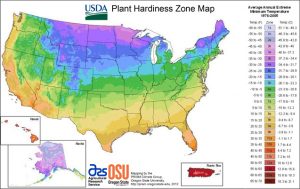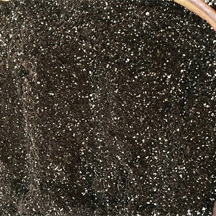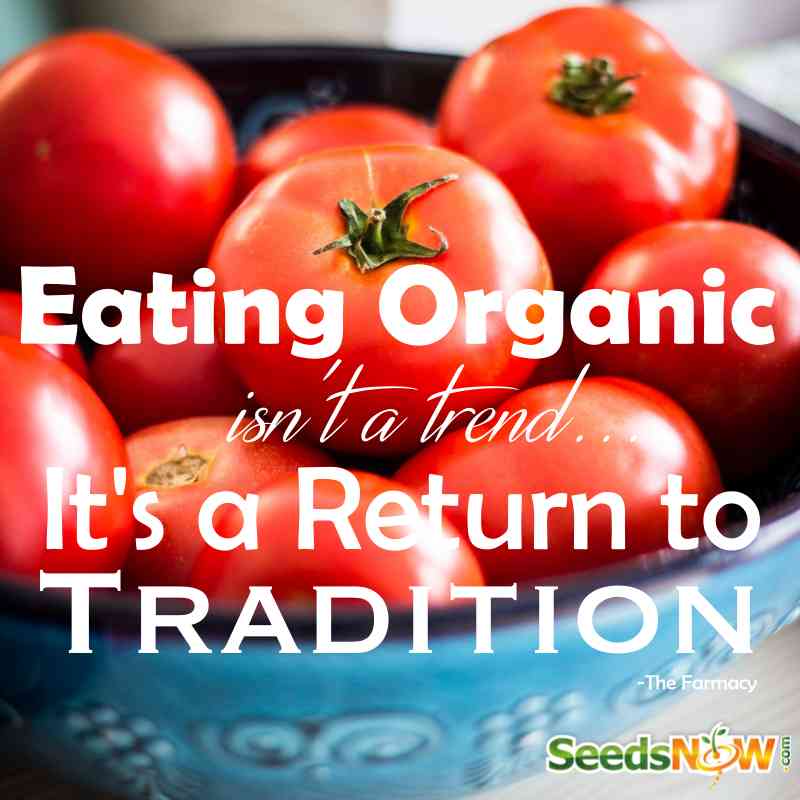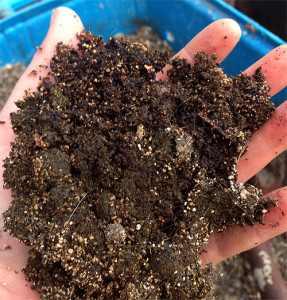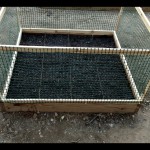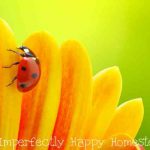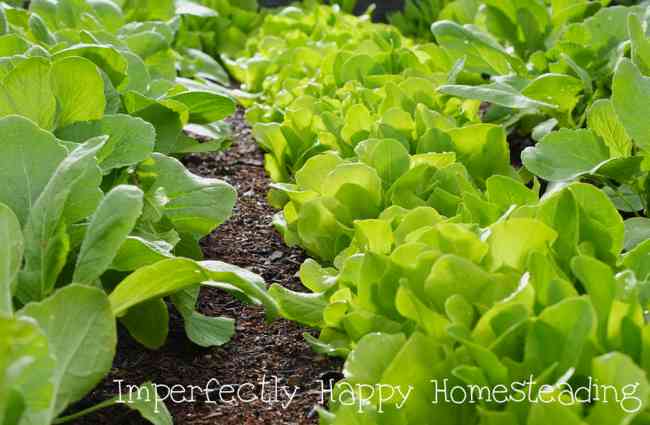
A spring vegetable garden just seems to go hand in hand with the season. Here in Phoenix our spring vegetables are a bit different than what you’ll be planting almost anywhere else; but the steps to have the best spring vegetable garden ever applies to everyone!
1. Spring Vegetable Garden Tip – Know Your Zone 
The key to having your best spring vegetable garden ever is to know what seeds and transplants are best to grow during your area’s spring season. If you’re in my neck of the woods then you’ll love the Maricopa Extension Office’s Planting Calendar.
If you’re not in my zone then I would recommend checking out your local extension office. You can even find out what your zone is at USDA Zone Finder, with just a zip code!
When is the best time to start your garden?
Make sure you’re following your zone, so you know when to plant your vegetable garden! Knowing your zone will help you know WHEN to start planting vegetables in your region. Getting those vegetables planted after the first frost date is important, so know your zone! Light frosts have also been known to kill veggies!
2. Spring Vegetable Garden Tip – Location Evaluation
Based on your garden last season or even last year – how’s your location? Are you plants getting enough sun? Or is it way too much? Often the boxes set out for our fall and winter gardens may actually get too much sun for the spring vegetable garden. If you’ve had trouble in the past, consider a location change or provide some shade for the hottest part of the day.
Other location considerations:
- Are animals getting in it?
- Do you have enough space for the amount you want to plant?
- Easy access – if you can’t get to it easily to water, tend and harvest; you’re probably not going to use the area for long.
Which side of the house is best for a vegetable garden?
The shorter growing vegetables should be planted on the south side of the garden. If you have taller vegetables, make sure you plant them on the north side of the garden. It’s best to have a good location plan for your garden. The more tought through your plan is, the better off your garden is going to be!
Knowing all of this information before early spring is important. Start your game plan now, so your veggies are easy to grow and not harder.
3. Spring Vegetable Garden Tip – Prepare Your Soil 
Between each season I like to get my soil ready for new growth. First I always employ companion planting and crop rotation. These two measures will give you healthier plants and larger harvests and they are simple to get started.
Next give that soil a little love! Your soil is the foundation of your garden; when it is happy and healthy…your veggies will be to. Consider testing your soil and seeing what it is lacking (check out Test Your Soil pH Without a Kit).
Because soil is filled with living organisms, and you’re going to need to feed them. You want to add some fresh compost in to bring the zing back into the living substance. If you don’t compost you can add other organic amendments to help the health and fertility of your soil.
See my DIY Soil Mix Recipe for Beds & Containers
4. Spring Vegetable Garden Tip – Water
Your spring garden is going to need consistent watering and good drainage. Before you put in your spring vegetable garden you’ll want to evaluate your watering source and how your drainage is working (especially if you’re using raised beds).
Are you going to self water with a hose? Do you have a long enough hose? Are you going to be putting everything on self watering timers? Make sure your equipment is in working order and reset timers for spring (warmer) instead of winter weather.
Make sure your beds have proper drainage.
How often should you wanter your vegetable garden?
You may think that watering more often is preferred, but it’s not. In fact, watering your garden about 2 inches deep is the real way to water your garden. Doing this once a week is going to give your garden a very quality water (which is important for growth). You can water more often, but that’s up to you. Whatever you do, make sure you’re watering DEEP enough!
5. Spring Vegetable Garden Tip – Buy Quality Seeds 
I prefer to grow from seeds because I feel like that gives me the greatest control over exactly what I am growing. I want seeds from organically grown plants and that are non-gmo (Like Seeds Now). I have a whole list of seed catalogs that you should consider ordering; but also consider buying and bartering for locally grown vegetable seeds.
The longer a vegetable is grown in your area, the more adaptable it becomes to your climate; therefor it has a much better chance to thrive in your garden. Look for a local seed saving bank that can offer heirloom or open pollinated seeds.
What brand of vegetable seeds are best?
There are several companies that you can buy your vegetable seeds from. Park Seed, Baker Creek Heirloom Seeds, and Hudson Valley Seeds are the top picks for buying vegetable seeds. If you’re tight on a budget, use what you have on hand and try not to worry too much about where you get the seeds from.
What should I look for when buying a vegetable seed?
When you are going through the process of buying a vegetable seed, you may be wondering what you’re looking for. Experts say that winter is really the best time to buy seeds. Also, make sure you consider the space you have in order to buy the right kind of seeds. Lastly, focus on your favorite varities. If you’re going to have a garden, then you might as well plant vegetables you enjoy!
6. Spring Vegetable Garden Tip – Transplants
If you find that you’re getting a late start to your spring vegetable garden, transplants are a great way to get started. Sure I love seeds but a garden from transplants is better than no garden at all! BUT make sure you know what you’re buying: organic, heirloom, non-gmo, hybrid, etc. I recommend a nursery over a big box home improvement store! You want to talk to someone who knows the plants, not just how to scan a bar on the bottom of the pot. Another great option is to get connected with your local gardening clubs; they often have sales and exchanges and you may be able to join in on the action.
Should I start seeds indoors?
I think if you want to and its easy for you, then you should totally start seeds indoors! Lots of garden plants can be started indoors!
What vegetables should not be transplanted?
Not every vegetable is able to be transplanted and this is important to know as you plant your spring vegetable garden. The first thing to notice about vegetables that should not be transplanted is that root vegetables are not suitable at all. Root vegetables include turnips, beets, and carrots. If you are trying to transplant something like corn, cucumbers, or melons, you can do so — but this needs to be done with care.
What to do after transplanting vegetables?
After you dig your hole and place the vegetable inside the dirt hole, you will want to firm the soil around the plants. The next part is important. You are going to gently water the vegetables that have been transplanted. You don’t want to add too much water, so use the garden setting on your hose.
7. Spring Vegetable Garden Tip – Fertilize 
Keep a regular schedule of your fertilization for the best results. And you may want to note what is working and what isn’t. Again, I prefer to add good home-grown compost in but some rabbit droppings or worm castings are great too.
The big thing is to be consistent, over and under fertilizing can cause issues. Another thing to take note of when you are fertilizing your vegetable garden is apply it every 3-4 weeks throughout the growing season. You can add the fertilizer as needed, so that you your garden continues the best production as possible.
This year, use the right fertilizer to help you with planning a spring vegetable garden.
8. Spring Vegetable Garden Tip – Keep Records
Keep a journal, notebook or document on your computer that tell you what, when and where you planted. You can track watering and fertilization here too. Be sure to make notes on whether you planted seeds or transplants and where you got them from (so you know what to buy and what not to buy next year).
How do you keep track of your garden?
To be honest, I love using a designated garden planner. When I have a planner, I’m able to keep all of my notes in one location. It’s so nice to be able to look at ONE gardening book and use that all year long or for however many years I decide to keep it.
Remember, markers can be lost so you want something besides that to tell you what’s growing in your spring garden! Also, keep in mind that a garden planned is a better garden! If you’re going to spend time doing a garden, then you might as well get the results you want! This spring vegetable garden plan will help you have the best vegetable garden ever!
More Gardening Content to Check Out

